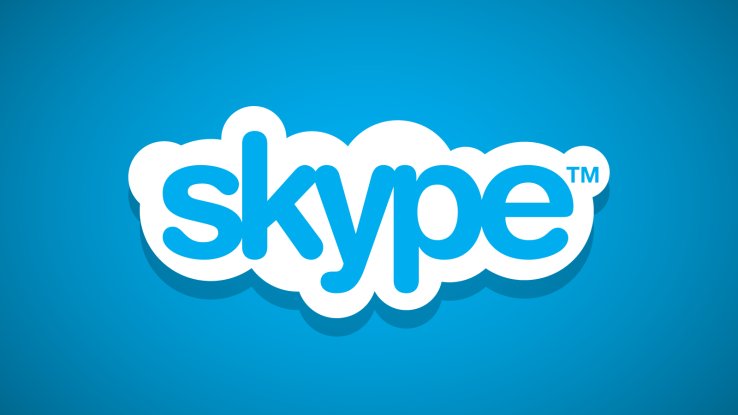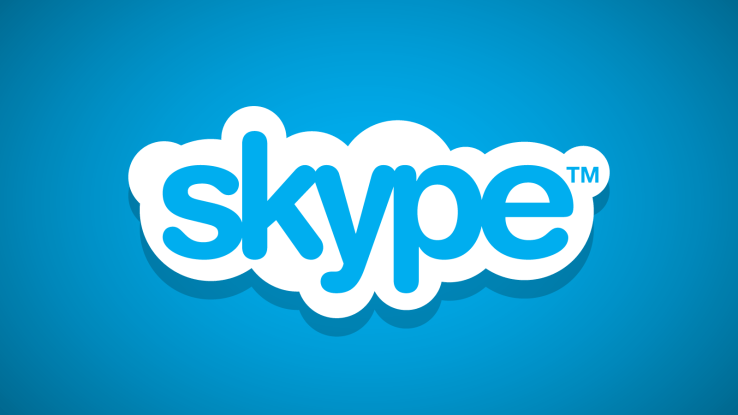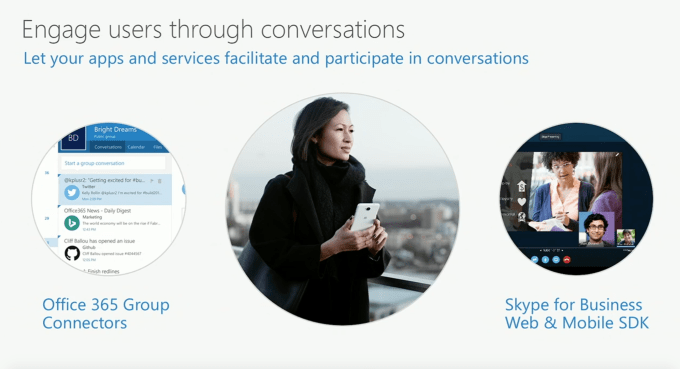

Following yesterday’s news about bringing bots to the Skype platform, Microsoft today unveiled two more SDKs for its Skype platform that will allow businesses and application developers a way to integrate Skype’s capabilities into their own applications. On stage at its annual Build conference, the company took the wraps off two new toolkits for developers: the Skype Web SDK and the Skype for Business App SDK. Both have the similar goal of expanding the Skype experience more broadly, by allowing third parties to leverage Skype’s larger network and feature set.
With the Skype Web SDK, Microsoft is providing businesses with a set of JavaScript Web APIs and HTML controls that allow developers to build real-time collaboration into their own apps. This includes things like presence, chat, audio and video, for example.
The SDK can work within any client application running in a browser, such as Internet Explorer, Chrome, Safari or Firefox.

The Skype for Business App SDK, meanwhile, is designed to bring Skype into a business’s own apps running on iOS and Android. Available soon as a preview release, this SDK is especially useful for what Microsoft calls “remote advisor experiences.” That means things like meetings between a mobile device user and someone in a remote location — like a doctor or a financial advisor, perhaps. The idea here is that you would launch the business’s app to make that connection, but Skype would power the communications that took place between the two parties.

On stage, the company demonstrated how a business could use Skype’s new business-friendly toolsets by showing an application from MDLIVE, a service that lets you access doctors, pediatricians and therapists in a virtual environment. During the demo, you could see how a prospective patient could book, schedule, then connect with a doctor for a real-time chat right in a business’s own application. Skype’s familiar call and hang up buttons seemed to be the only indication that it was providing the connectivity functionality for the video chat.
Microsoft also noted that its SDKs were HIPAA compliant, enabling secure conversations such as those that take place between a doctor and patient.
Though not demoed, another company taking advantage of the new SDKs is Smartsheet, a cloud-based enterprise work management and collaboration solution. This company is creating an add-in for its cloud applications that lets teams see presence and engage in IM conversations related to the tasks and entries at hand.
Effectively, with these SDK releases, Microsoft is taking the power of Skype’s backend and turning it into something that can now be embedded in applications across devices, including desktop and mobile, and web and native applications.
However, the company didn’t answer several questions that these businesses would have, including things like whether licensing and server costs are involved, or whether the Skype SDKs would support the WebRTC standard, among other things.
Update: Microsoft says that if the company is licensed for Skype for Business Server or Skype for Business Online, then there are no additional costs for the use of the SDKs. In addition, it says that the Skype Web SDK will run in browsers supporting WebRTC. As part of this release it’s also previewing support for plug-in free audio and video calls to and from Skype for Business with Microsoft Edge.

